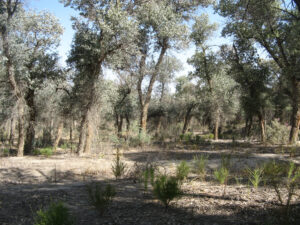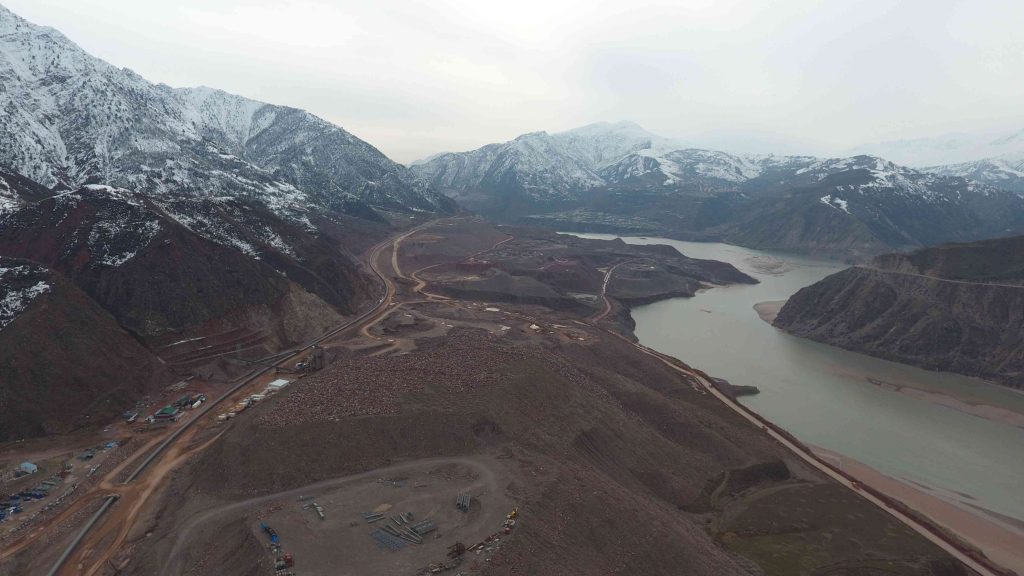
Rogun Hydro vs Biodiversity: Review of the Updated Environmental and Social Impact Assessment (ESIA) for the Rogun Hydropower Plant Project for Compliance with the IFIs’ Biodiversity Standards (November 2025). Editors: Eugene Simonov (Rivers without Boundaries), Andrey Ralev (CEE Bankwatch)
“Tugay Forests of the Tigrovaya Balka Nature Reserve” (means “Tiger Valley” in Russian) , inscribed as World Heritage in 2023, is the only place in the world where the Asiatic poplar tugay ecosystem (floodplain forest) has been preserved in its original state on a vast territory. It is home to Bactrian (also known as Bukhara, Tarim) deer, the goitered gazelle, and the striped hyena populations, 50 species of waterbirds, as well as several endemic and threatened plants. Nature Reserve contains a large stretch of lower Vaksh river and Tajikistan bank of Panj River (confluence of those two form Amu-Darya River) which hydrological process are basis for tugay ecosystem formation and functioning.
Rich fish fauna includes critically endangered endemic sturgeons: Large Amudarya shovelnose –Pseudoscaphirhynchus kaufmanni(IUCN_CR) , Small Amudarya shovelnose – Pseudoscaphirhynchus hermanni (CR), as well as Pike asp –Aspiolucius esocinus(EN), Aral barbel –Luciobarbus brachycephalus(VU) , Razorbill (EN)-Capoetobrama kuschakewitschi, which also listed as rare and endangered in the Red Book of the Republic of Tajikistan (2015).
The ecosystems of the Tigrovaya Balka Nature Reserve floodplain depend on a meandering Vakhsh river and its dynamics. These dynamics are conditioned by the variation in river flow, by regular seasonal variations (low flows in winter, high flows in summer) as well as by rare and extraordinary flood events (extreme floods) and corresponding sediment flow.
Major decline in tugay ecosystems and endemic sturgeon populations has been caused by changes in river flow and habitats due to construction of Vakhsh hydropower cascade and other dams in Amu-Darya River basin. No longer floodplain is regularly flooded and the river carries insufficient sediment to sustain key fish freshwater habitats.
Rogun Dam as the last stage in completion of the Vaksh hydropower cascade will double its river flow retention capacity, which should lead to further degradation of tugay forests, unless sufficient artificial floods are incorporated into the dam operations.
Studies on establishing environmental flows to sustain unique ecosystem were included in the Terms of Reference for Environmental and Social Impacts Assessment for Rogun Hydropower Project, but its results (if any) have never been released.
The World Bank, Islamic Development Bank and other financiers in correspondence with NGOs failed to explain how impacts on the World Heritage could be assessed and avoided.
According to the 2024 World Heritage Watch Report, the ESIA fails to develop measures mitigating major negative impacts, including the reduction of the river flow to the Aral Sea, impacts on the “Tugay Forests of the Tigrovaya Balka” World Heritage site in the Vakhsh River floodplain, degradation of habitat of critically endangered endemic sturgeons, whose survival is fully dependent on flow regime of Vakhsh and Amu Darya rivers.

Photo: Large Amudarya shovelnose -Pseudoscaphirhynchus kaufmanni(IUCN_CR) , By Alexey Chernyak, 2005.
Related reading:
Tigrovaya Balka World Heritage vs. Rogun HPP Reservoir and Vakhsh River Hydropower Cascade. Presentation at the 2024 World Heritage Forum
NGO Letter to Financiers on World Heritage and Biodiversity Impacts of the Rogun HPP
Tigrovaya Balka Nature Reserve in Tajikistan: How Can We Save the Last Stronghold of Tugay Forests? CABAR-ASIA
Visit World Heritage. Tugay Forests of the Tigrovaya Balka Nature Reserve



